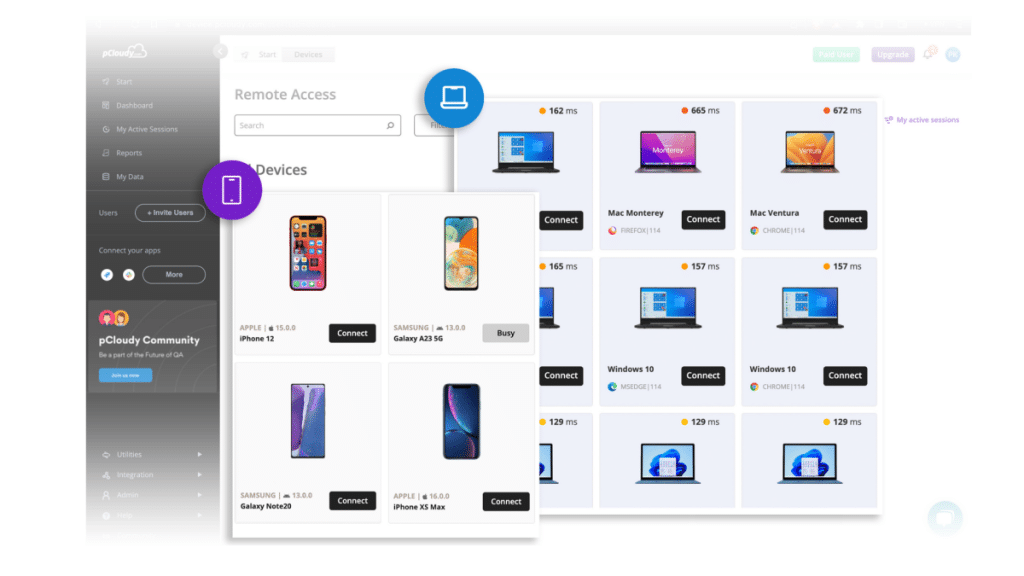With millions of users worldwide relying on the web for information, services, and products, it’s imperative that websites are inclusive and accessible to all. However, achieving website accessibility can be a challenging task, especially with the ever-evolving landscape of technology and user needs.
In 2024, businesses and organizations are increasingly recognizing the importance of website accessibility testing tools to ensure their online platforms are usable by individuals with disabilities. These tools not only help identify accessibility issues but also provide insights and solutions to enhance the user experience for all visitors.
Despite the growing availability of accessibility testing tools, there are still challenges and problems to overcome. One major challenge is the complexity of modern websites, which often incorporate dynamic content, multimedia elements, and interactive features.
Additionally, there’s a need for greater awareness and understanding of accessibility standards and guidelines among web developers and designers. Many accessibility issues stem from a lack of knowledge or oversight during the development process. Therefore, education and training are essential to address these challenges and ensure that websites are accessible to everyone, regardless of their abilities.
What Are Web Accessibility Testing Tools?
Web accessibility testing tools play a pivotal role in fostering an inclusive digital environment, aligning websites with accessibility standards, and enhancing user satisfaction and engagement. Web accessibility testing tools are designed to assess and enhance the accessibility of websites and web applications. They evaluate compliance with standards like the Web Content Accessibility Guidelines (WCAG), pinpointing elements that might impede access for users with disabilities. These tools scrutinize various aspects such as color contrast, keyboard functionality, and compatibility with screen readers, ensuring that web content caters to a diverse audience.
These tools offer several advantages and applications. Firstly, they foster inclusivity for individuals with disabilities, be it visual, auditory, motor, or cognitive impairments. Secondly, they aid in meeting legal obligations and ethical norms concerning web accessibility. Moreover, by enhancing website accessibility, these tools enrich the user experience for all visitors.
5 Best Web Accessibility Testing Tools
Pcloudy
A key strength of Pcloudy lies in its adherence to WCAG standards, providing developers with an accessibility testing tool for quick compliance. The platform’s automated accessibility testing feature swiftly identifies common issues, generating detailed reports for efficient problem resolution without false positives.
Pcloudy stands out by facilitating real device testing on a diverse range of mobile devices. Thereby ensuring a genuine user experience across different operating systems and browsers. The tool also enhances compatibility testing, supporting swift deployment and integration with popular CI/CD tools. Notably, Pcloudy’s no-code test automation simplifies the process of test development and maintenance. With access to over 5000 device-browser combinations, it enables comprehensive testing across diverse environments.
Remediate
Remediate offers an automated solution for digital accessibility testing, focusing on websites, online applications, and PDFs. By utilizing this tool, users can ensure compliance with WCAG regulations across all conformance levels, enhancing accessibility for all users.
Its custom form application tool enables testing of web applications and private websites that require login credentials. It is compatible with most multi-factor authentication protocols. Further this tool simplifies the testing process without requiring installation on the end user device.
Axe
Axe is a comprehensive accessibility testing tool that empowers users to identify and address accessibility issues effectively. It is developed by Deque Systems and is a free and open-source testing tool. It is also available as an extension for Chrome and Firefox browsers. By installing the Axe extension, users can analyze web content for accessibility issues directly within their browser. The tool generates a list of accessibility issues, each with a clickable link providing additional information for further insight.
Moreover, Axe facilitates manual accessibility testing by allowing users to simulate screen reader usage for specific areas of the web content..
ARC Platform by TPGi (H3)
The ARC Platform by TPGi is a powerful tool designed to ensure web accessibility effectively. Packed with a plethora of features, it addresses the diverse needs of testers and developers. Its noteworthy features include real-time monitoring, automated testing, and comprehensive reporting capabilities. This tool stands out as an invaluable resource suitable for businesses of any size.
One of the standout features of the ARC Platform is its ability to simplify intricate processes. It automates various tasks that significantly reduces the time and effort of the developers. ARC Platform offers a robust solution for ensuring web accessibility, empowering businesses to meet compliance standards and create inclusive digital experiences for all users.
WAVE
WAVE is a user-friendly tool favored by content creators for its detailed annotations and recommendations. That also makes it an excellent and popular choice among businesses of size. What makes this tool unique from its competitors is its in-browser functionality,which offers a quick and efficient process for accessibility testing.
One notable advantage of WAVE is its commitment to data privacy, as it does not store user content on its servers. This ensures that sensitive information remains secure while users leverage the tool to enhance the accessibility of their digital content. Thus WAVE is a reliable and user-friendly tool for content creators.
Conclusion
The tools highlighted in this article offer a range of features and capabilities to help developers, designers, and testers identify and address accessibility issues effectively.
By utilizing these tools, website owners can enhance user experience, reach a broader audience, and mitigate legal risks associated with non-compliance. Additionally, integrating accessibility testing into the development process from the outset can streamline workflows and reduce the time and effort required to rectify issues later on.
Embracing accessibility is not just a legal requirement but also a moral and ethical imperative in today’s digital landscape.

